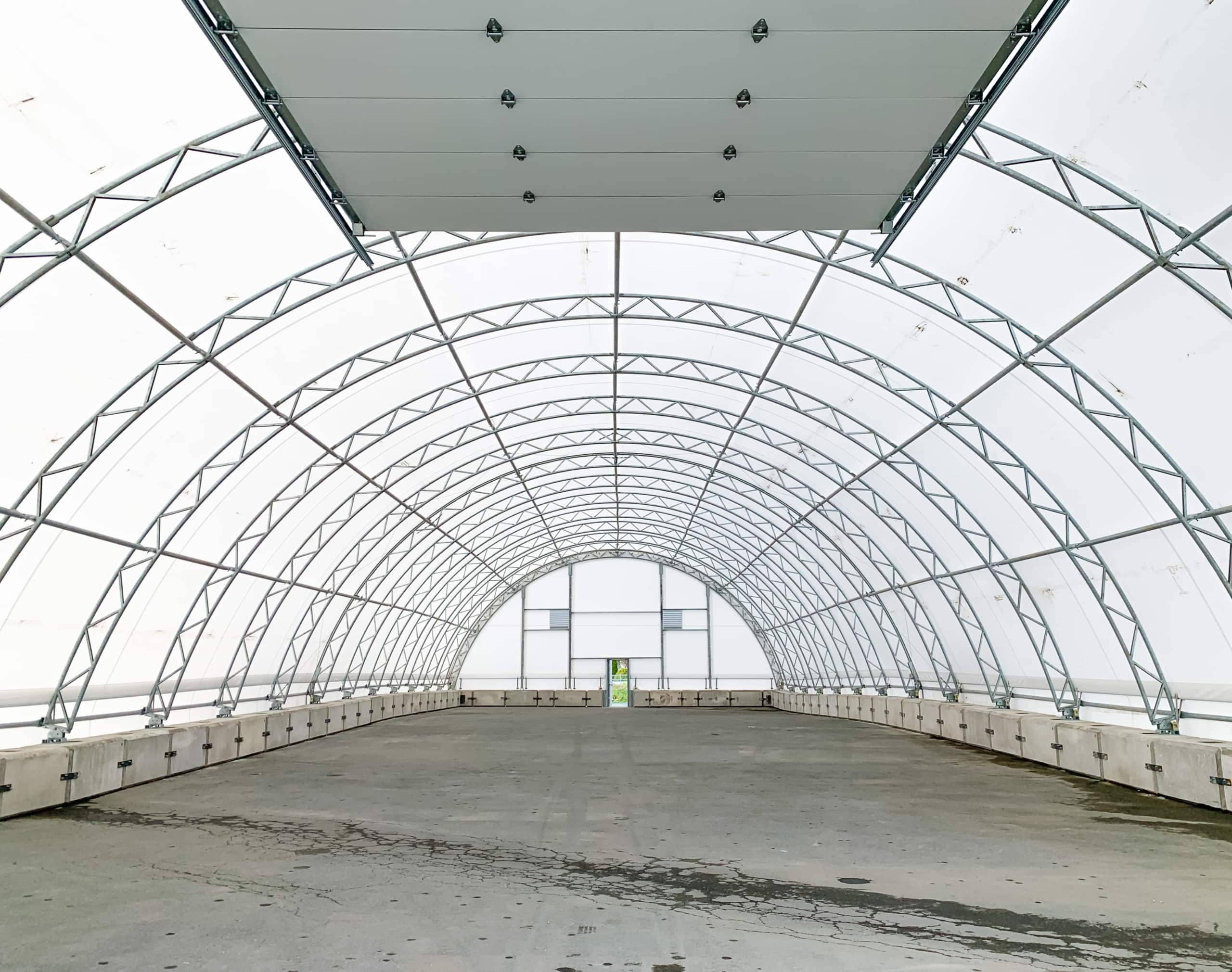The world is becoming increasingly aware of industry’s impact on the environment as well as looking for ways to minimize this impact. Although the focus has largely been on reducing carbon emissions through renewable energy, there is also a need for sustainable, low environmental impact buildings that may be used in a range of applications.
Fabric structures are an excellent example of a structural solution that is both long-lasting, effective, as well as sustainable.
Traditional Buildings: What’s The Issue?
Even though traditional buildings roofs may last a little longer than fabric covers, they require a lot of energy to manufacture, construct, and run.
Traditional structures necessitate a considerable number of raw materials, which adds to their overall environmental impact. To be suitable for use in building, each raw material must go through its own processing. Additionally, these structures have a long-term environmental impact due to their high energy consumption, which calls for a continual reliance on the fossil-fuel-powered electricity grid for lighting, heating, cooling, and a variety of other utilities.
Sustainable Benefits of Fabric Buildings
Fabric structures are widely used in a variety of sectors due to their versatility and cheaper running costs. However, in a more climate-conscious society, their environmental benefits are becoming more relevant.
- Sustainable Up-Keep
Fabric solutions use less lighting, heating, and cooling than traditional structures. Structures, such as our Edge fabric building solutions, are built with a great ventilation system that allows air to move freely, resulting in a dryer, healthier environment for the building’s occupants and materials while reducing heating and cooling costs as well as energy requirements.Additionally, Edge’s fabric structures allow for more natural light on work locations. Not only does this result in higher productivity, cost savings, and happier employees, but it has the added benefit of requiring less energy for electric lighting.
- Less Space and Fewer Resources
With fabric structures, it is possible to enclose larger spaces with the use of fewer resources, which also greatly reduces environmental impact. This not only makes them able to take up less land – another precious commodity – but it also reduces the amount of energy required to create them as well as the amount of carbon emitted.
- Maintenance and Longevity
Fabric buildings are extremely durable and can withstand harsh weather and environmental conditions. Edge Inc structures are built to last, with a lifespan of 15-30 years for buildings constructed of fabric materials, including our low-cost fabric structures, and are simple to maintain. Our fabric structures may be cleaned with just water and mild soap because they require few components.This means that they will not need replacing often, which would drain energy resources as well as building materials required, thus increasing the overall impact on the environment. Additionally, the maintenance required has a low level of effect on the environment due to the small amount of maintenance required and the lack of harsh chemicals required.
- Permanent or Temporary Solutions
Our Edge Inc fabric structures are able to be utilized as permanent structures or as temporary and portable ones. In the case of temporary structures, a benefit of this, environmentally, would be the ability to construct and deconstruct the structures as needed.This means that the space where the structure is situated can be utilized for other purposes while it is deconstructed. Add to that the fact that you do not need to purchase a new structure or build something new (thus expending more resources) when the structure is needed again and you have a largely sustainable structure solution in fabric buildings.
- Built for Your Specific Needs
Our construction solutions are designed for your industry demands and come in a variety of sizes. Because these fabric buildings may be tailored to your industry’s needs, you won’t have to spend additional money modifying them or creating other structures to compensate for the drawbacks that traditional buildings may have.Essentially, they can provide you with each specific requirement thus eliminating the need to keep expending natural resources and other materials to make up for the lack of traditional buildings’ personalization to your industry.
- Lightweight Structures
Fabric buildings have the added benefit of generally utilizing materials that are lightweight and easy to transport which reduces the transport carbon emissions as well as increasing the number of structures that can be transported using the same amount of vehicles.
In conclusion, it can be said that there are a host of environmental benefits contributing to the overall sustainability of fabric solutions. These structures require fewer materials and energy to produce and maintain as well as taking up less space in the environment and possibly requiring less energy for travel and emitting less carbon. Our fabric buildings have the natural light and ventilation necessary to reduce energy demands on those fronts. Additionally, they require little to no maintenance and can be used as a temporary building solution that can be reused as many times as necessary.
All in all, because of their excellent interior environment and long-term energy cost reduction, fabric structures have become the sustainable choice. Edge’s structures have all the environmental and structural benefits you could need for your structure solutions! Contact us today to begin your fabric-building journey.



